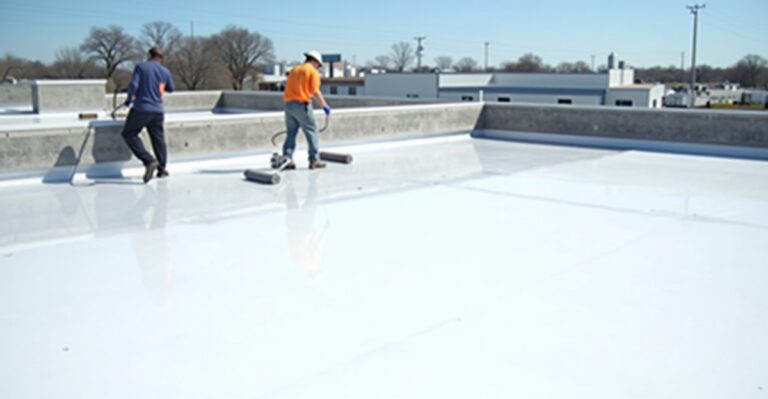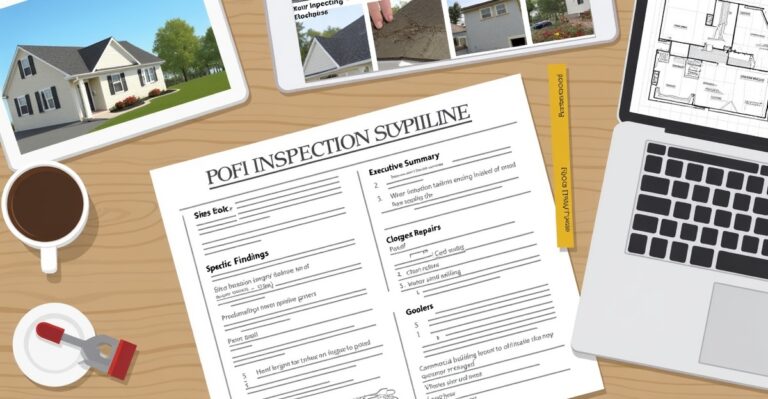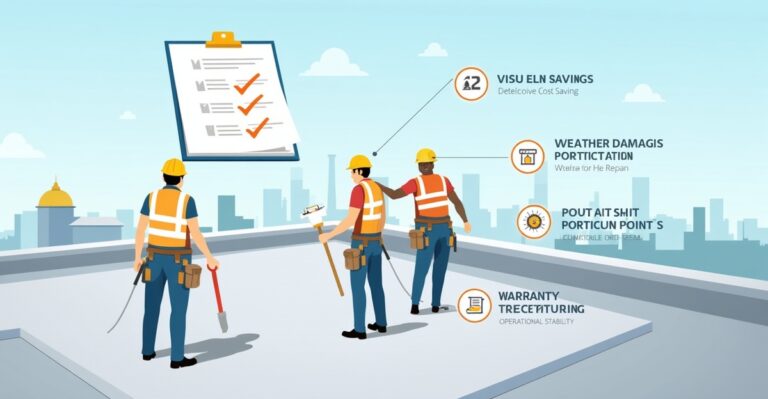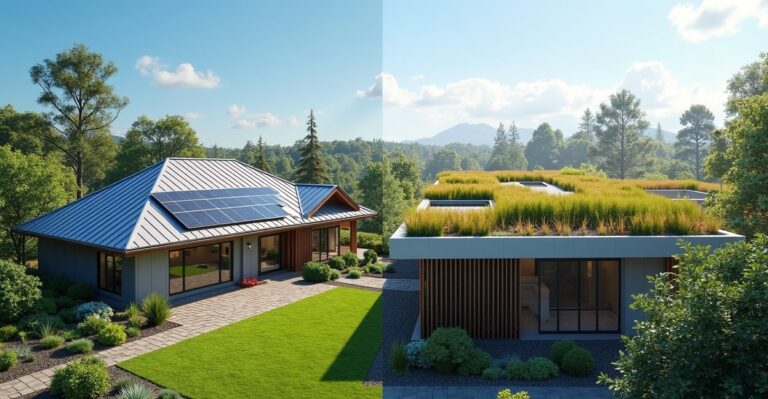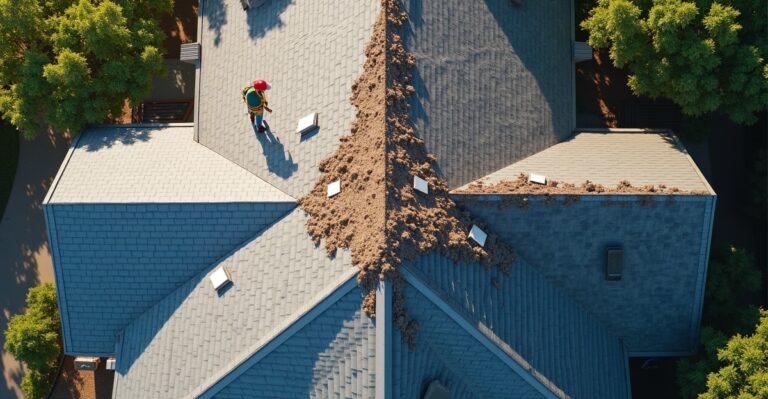How Solar Panels Impact Roof Lifespan
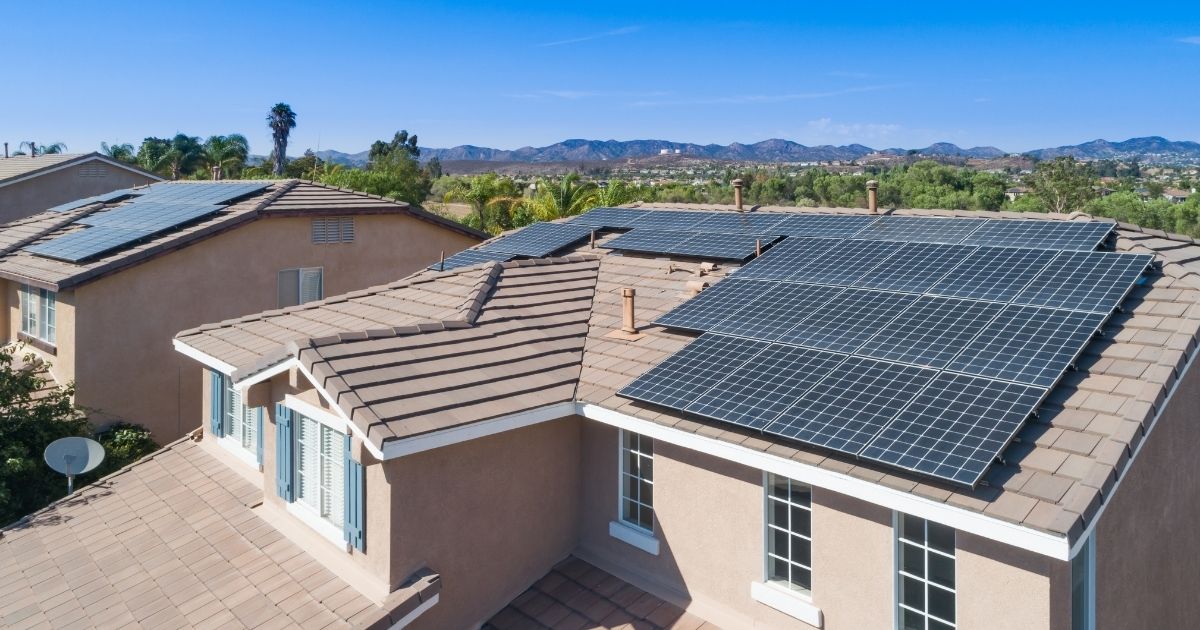
Solar panels offer a smart way to reduce energy bills and boost property value—but what do they mean for your roof? If you’re wondering about the solar panels roof impact, you’re not alone. Many property owners want to understand how adding panels affects roof durability, maintenance, and long-term performance.
This article breaks down what you need to know about solar and roofing compatibility—whether you’re managing a commercial facility or planning an upgrade to your home. You’ll learn about potential benefits, common risks, and how to protect your investment with the right preparation and coordination.
Here’s what we’ll cover:
- Do Solar Panels Affect Roof Longevity?
- Is My Roof Ready for Solar?
- Choosing the Right Roofing for Solar Compatibility
- Coordinating Roofing and Solar Services
- Maintenance Tips to Extend Roof and Solar Lifespan
- Conclusion – Making the Smart Choice for Your Roof and Solar Investment
Let’s start by looking at how solar panels can affect your roof—both positively and negatively.
Do Solar Panels Affect Roof Longevity?
It’s a fair question—and one we hear often from both homeowners and commercial property managers. The short answer is yes, solar panels can affect your roof’s lifespan. But whether that impact is positive or negative depends on the condition of your roof and how well the system is installed and maintained.
When done right, solar panels can help protect your roof. When done poorly, they can lead to premature wear, leaks, or structural stress. Let’s take a closer look at both sides.
Benefits of Solar on Roof Longevity
One lesser-known advantage of solar panels is the protection they offer from the elements. Panels act like a shield, covering sections of your roof and reducing exposure to sun, rain, and hail.
Reduced UV damage: Roofs naturally degrade over time due to constant sun exposure. Solar panels block that direct sunlight, slowing down deterioration on the areas they cover.
Storm shielding: In many cases, solar arrays can help deflect hail or minimize the brunt of heavy rain. For homes in storm-prone regions or commercial buildings with large flat roofs, this added barrier can make a difference—especially when paired with proper roof coatings or membranes designed for solar integration.
Temperature regulation: Some properties also experience slight improvements in insulation. Research published in Frontiers in Environmental Science shows that solar panel shading can reduce surface heat, which may lessen thermal expansion and contraction cycles that damage roofing materials.
Risks if Installed Incorrectly
On the flip side, a poorly planned solar installation can introduce problems that shorten your roof’s lifespan instead of extending it.
Roof penetrations and leaks: Most systems require mounting brackets that fasten directly to your roof. If these penetrations aren’t properly sealed and flashed, they can become water entry points—leading to rot, mold, or hidden damage.
Added structural load: While most roofs can support solar panels, older or already compromised structures may struggle under the extra weight. This is especially important for flat commercial roofs where load distribution is critical. A solar-ready roofing assessment helps prevent these issues.
Ventilation and moisture buildup: Solar arrays can trap debris, block airflow, and create shaded areas where moisture lingers. Without proper ventilation and clearance, you may end up with mold growth, deteriorated decking, or compromised insulation beneath the system.
Key takeaway: Solar panels can help or hurt your roof depending on how they’re installed and maintained. When you work with experienced professionals—like our team at RayPro Roofing—you get the benefit of proper coordination, c
Is My Roof Ready for Solar?
Before adding solar panels to your property, it’s important to make sure your roof can support the system—both structurally and in terms of long-term performance. Solar panels are a major investment, and mounting them on a roof that’s already near the end of its lifespan can lead to costly complications down the road.
Whether you’re a homeowner planning for energy savings or a facility manager coordinating a large-scale solar upgrade, evaluating your roof’s condition upfront is a smart move.
Signs Your Roof May Need Work First
Start with a basic inspection—or better yet, schedule a professional one. Some signs that your roof may not be ready for solar include:
- Curling, cracked, or missing shingles
- Soft spots or signs of sagging
- Visible water stains or mold in the attic
- Past roof repairs that may have compromised integrity
- Roof materials that are nearing the end of their service life
Roof type also plays a role. Some materials are more solar-friendly than others. Asphalt shingles, standing seam metal, and certain flat roof membranes tend to be easier and safer to work with. Tile or wood shake roofs can complicate mounting and often require additional preparation—or alternate solutions.
Compatibility matters, too. Solar systems should work with your roofing material, not against it. Mounting hardware, flashing, and weight distribution all need to be aligned with your roof’s design and structure. This is where understanding solar panel system compatibility with roofing becomes essential.
Do You Need a New Roof First?
A good rule of thumb: if your roof is more than 10–15 years old, it’s worth considering a replacement or at least significant repairs before installing solar. Why? Because according to the U.S. Department of Energy, most solar systems are expected to last 25–30 years, aligning closely with modern roofing lifespans. If your roof can’t match that timeline, you’ll likely face a panel removal and reinstallation—costly, time-consuming, and disruptive.
Think of it like installing new flooring—you wouldn’t lay hardwood over a rotted subfloor. The same logic applies here. You want a strong, reliable foundation before adding a long-term system on top.
So, do you need a new roof before going solar?
Here’s a quick checklist:
- Your roof is older than 15 years
- You’ve had multiple repairs or leaks
- The roof has visible damage or weak spots
- Your roofing material isn’t compatible with solar
- You want to avoid panel removal during future roof work
If you checked one or more of these boxes, it’s a good idea to talk with a roofing contractor experienced in solar coordination. At RayPro, we assess your roof’s condition, compatibility, and remaining lifespan to help you make an informed decision—before panels go up.
Key takeaway: A roof inspection before solar installation isn’t just recommended—it’s essential. It protects your solar investment, avoids future rework, and ensures your system performs as it should for decades to come.
Choosing the Right Roofing for Solar Compatibility
Not all roofs are created equal when it comes to supporting a solar installation. Whether you’re managing a commercial facility or upgrading your home, understanding how your roof’s design and materials affect solar compatibility is key to long-term performance and peace of mind.
Let’s break down what matters most when it comes to choosing the right roof for solar—starting with structure, slope, and material.
Flat vs. Pitched Roofs
Flat Roofs (common in commercial buildings):
Flat roofs can work well for solar, especially with ballasted or tilt-mounted systems that optimize panel angle. But they also require careful load distribution and drainage planning. Standing water, poor sealing, or even minor dips in the surface can become major issues if not addressed during design.
Pitched Roofs (common in residential homes):
Sloped roofs—especially those facing south or west—are naturally well-suited for solar. Panels can be mounted directly to the rafters with proper flashing, and they typically don’t need tilt frames. Just make sure the roof has enough unobstructed space and is in good condition before installation.
Residential vs. Commercial Considerations
Residential properties often focus on maximizing energy savings, aesthetics, and compatibility with common materials like asphalt shingles or metal roofing. The goal is a seamless, low-maintenance solution.
Commercial properties need to consider structural load limits, multi-roof logistics, and long-term ROI. Flat roofs, HVAC placement, and compliance regulations are all part of the planning equation.
At RayPro, we help both types of clients navigate these considerations through detailed site evaluations and code-compliant planning.
Best Roofing Materials for Solar Panels
Some roofing materials handle solar integration better than others:
- Asphalt shingles: Affordable, common, and easy to work with—great for most residential installs.
- Standing seam metal: Ideal for solar; panels can often be clamped on without penetrating the surface.
- Flat membrane systems (TPO, PVC): Popular for commercial use, but must be installed with proper ballast or anchoring systems to avoid punctures.
- Tile or slate: More fragile and labor-intensive, often requiring extra equipment or material replacement to mount panels safely.
If you’re planning a new roof before going solar, consider options that are durable, low-maintenance, and solar-friendly.
Waterproofing and Mounting Considerations
Even the best roof can run into trouble if panels aren’t mounted correctly. Solar arrays require brackets and hardware that attach through or on top of your roofing material. That’s where waterproofing becomes critical.
Flashing and sealing around solar hardware prevent water from penetrating mounting points. This involves custom-fit flashing, sealants, and proper underlayment protection.
Waterproofing around solar mounts is especially important on flat or low-slope roofs where standing water can pool. Incorrect sealing can lead to long-term moisture issues, insulation damage, or compromised roof deck integrity.
At RayPro, we don’t just install roofs—we prepare them to handle solar safely. From selecting compatible materials to ensuring proper flashing and sealing, we make sure your roofing system and solar installation work together, not against each other.
Key takeaway: Your roof’s structure and material directly affect how well it will support solar—now and over the next 20 to 30 years. Choose wisely, and make sure your installer understands both roofing and solar integration.
Coordinating Roofing and Solar Services
If you’re planning to go solar—or already have panels installed—proper coordination between your roofer and solar contractor is more than just a nice-to-have. It’s essential. Roofing and solar systems are deeply connected, and how they’re installed (and in what order) can significantly affect performance, warranty coverage, and long-term cost.
At RayPro Roofing, we’ve seen what happens when projects aren’t aligned: delays, unexpected expenses, and insurance headaches. That’s why we emphasize upfront planning and clear communication—especially when it comes to roofing warranties with solar panels and navigating insurance claims involving solar roofing.
Why Timing Matters: Roof First, Solar Second
If your roof is nearing the end of its lifespan, it’s best to replace it before installing solar. Why? Because removing and reinstalling panels later isn’t just inconvenient—it’s costly and can void workmanship warranties if not handled correctly.
Even if your roof has years left, getting a professional inspection first can help avoid surprise issues that could delay your solar installation or reduce system efficiency. Think of it as laying a strong foundation before building the framework.
We Handle Solar Detach/Reset, Too
Already have panels and need roof repairs or a full replacement? No problem. RayPro offers solar detach and reset services as part of our roofing solutions. We carefully remove your panels, complete the roofing work, and reinstall the system—without disrupting warranties or damaging your investment.
This service is especially valuable for commercial properties managing multi-roof facilities or buildings with legacy solar systems. We take care of the heavy coordination, so you don’t have to juggle vendors or risk extended downtime.
Contractor Coordination: What to Expect
One of the biggest challenges property owners face is knowing who’s responsible for what—and when. Here’s how we simplify that:
- We coordinate the timeline. From permits to project phases, we manage the schedule to minimize disruption and keep everything moving smoothly.
- We handle communication. Our project manager keeps you informed and aligns with solar contractors when needed.
- We protect your warranties. Improper installation—or having unqualified teams rework your system—can void manufacturer or roofing warranties. Our licensed team ensures all work meets code and product standards.
- We reduce your risk. By combining services, we minimize missteps and eliminate finger-pointing between trades.
Key takeaway: Roofing and solar aren’t separate systems—they work best when planned and executed together. Whether you’re installing solar for the first time or repairing a roof under existing panels, choose a contractor who understands both sides of the equation. RayPro does.
Maintenance Tips to Extend Roof and Solar Lifespan
Once your solar system is in place, it’s easy to forget about what’s underneath. But regular maintenance is essential to protect both your investment in solar and the roof that supports it. With just a few routine checks and smart upkeep strategies, you can extend the lifespan of both systems—and avoid costly surprises down the line.
Keep It Clean and Clear
Clean your solar panels regularly—dust, pollen, and debris can reduce energy output. Most systems only need a gentle rinse with a hose a few times a year, but always follow the manufacturer’s care instructions.
Inspect mounts and hardware. Check for signs of rust, shifting, or loose brackets. Small issues at mounting points can turn into leaks or structural problems if ignored.
Trim back trees or overhanging branches. Not only do they reduce solar efficiency, but falling limbs can damage both the panels and the roof.
Seasonal Roof Checkups
We recommend inspecting your roof at least twice a year—ideally in spring and fall. Look for:
- Soft spots or sagging areas
- Water stains in the attic or ceiling
- Debris buildup around the panel edges or roof drains
- Signs of mold or mildew, especially around mounting hardware
It’s also wise to schedule a professional roof inspection after any major storm. Panels may protect parts of the roof, but surrounding areas still face full weather exposure.
What If You Need Repairs Under the Panels?
Sometimes, roof repairs or upgrades require temporary panel removal. This is especially common during roof replacements with solar panels or when leaks appear under mounting systems.
RayPro provides full solar panel removal and reinstall for roof replacement as part of our service. We carefully document the panel layout, remove the array, complete all roofing work, and reinstall the system—ensuring everything remains compliant and covered under warranty.
We also handle solar array removal processes for clients who want to upgrade to a new roof type, transition to a different system, or relocate panels for better performance.
Cost of Removing and Resetting Panels
The cost to detach and reset solar panels depends on several factors:
- Number of panels and system size
- Roof complexity and slope
- Accessibility of the array (single-story vs. multi-level buildings)
- Condition of existing mounting hardware
- Local labor and permit requirements
For residential systems, the average range is typically $1,000 to $3,000, while larger commercial systems may vary based on scope and scale.
At RayPro, we help minimize disruption by bundling these services with your roofing project. Our goal is to preserve your energy production, protect your roof investment, and eliminate the stress of managing multiple contractors.
Key takeaway: A little maintenance goes a long way. Clean panels, seasonal checkups, and prompt action when issues arise will keep your solar and roofing systems performing at their best—for decades to come. And if you need help with panel removal or repairs, we’ve got you covered.
Conclusion – Making the Smart Choice for Your Roof and Solar Investment
Adding solar panels to your property is a smart long-term decision—but only when your roof is ready to support them. As we’ve covered, the solar panels roof impact can be either positive or negative, depending on factors like installation quality, roofing material, structural condition, and long-term maintenance.
When properly installed, solar panels can actually help shield your roof from the elements and extend its lifespan. But if your roof is aging, damaged, or poorly suited to support a solar system, you risk costly issues like leaks, structural strain, or premature replacement. That’s why getting a roof inspection before installing solar is not just a best practice—it’s essential.
At RayPro Roofing & General Contracting, we’ve helped countless homeowners and commercial property managers across 17 states make confident, informed decisions about solar integration. From evaluating roof readiness to managing full panel detach/reset services during repairs, we bring nearly two decades of roofing expertise to every project.Let’s make sure your roof is solar-ready—book a professional inspection today.
We’ll assess your roof, explain your options clearly, and help you protect both your property and your energy investment for years to come.
Frequently Asked Questions
Not if they’re installed correctly. In fact, solar panels can help protect portions of your roof by shielding it from direct sunlight, rain, and hail. However, poor installation—such as improper sealing around mounts or overloading the roof structure—can lead to water leaks, rot, or structural issues. That’s why it’s essential to work with a contractor experienced in both roofing and solar coordination.
If your roof is older than 10–15 years or shows signs of wear, it’s often more cost-effective to replace it before going solar. Most solar systems last 25–30 years, and having to remove and reinstall panels just a few years in for a roof replacement can lead to unnecessary expenses. A professional roof inspection will help determine whether your current roof is ready for solar or due for an upgrade.
Asphalt shingles, standing seam metal, and flat membrane systems (like TPO or PVC) are among the best roofing materials for solar panels. These surfaces are durable, compatible with common mounting systems, and easier to work with during installation. More fragile materials, like clay tile or wood shake, may require extra preparation or modifications to ensure safe panel attachment.
In many cases, yes. If repairs are needed under or around the panel mounts—especially for leaks or full roof replacements—the system will need to be carefully removed and reinstalled. RayPro offers solar panel removal and reset services, ensuring the process is handled correctly and your warranties remain intact
The best approach is to involve both contractors early—or work with a provider like RayPro who understands both roofing and solar requirements. Poor communication between trades can lead to mistakes that void warranties or cause damage. Our team ensures proper timing, installation methods, and documentation so your roof and solar system perform safely and efficiently for years to come.

